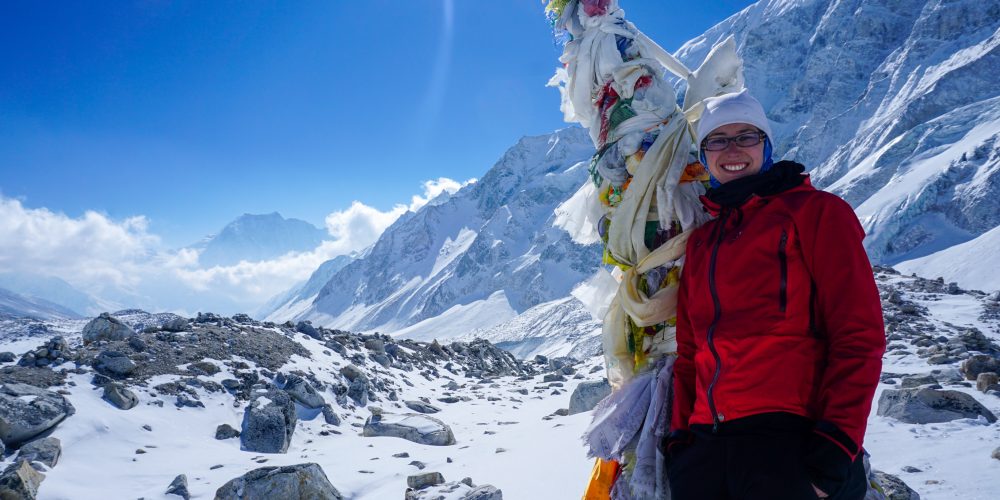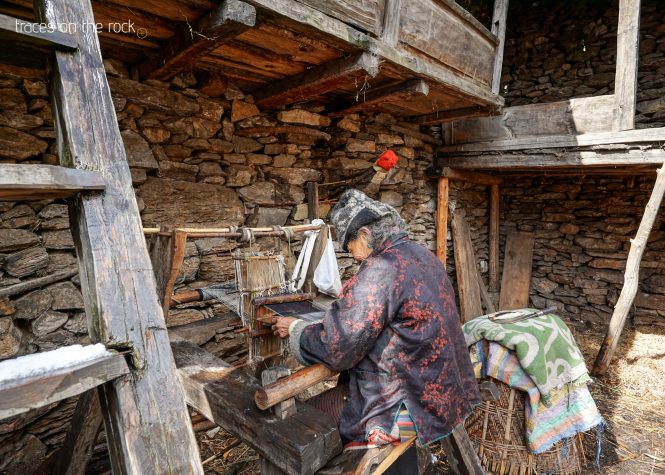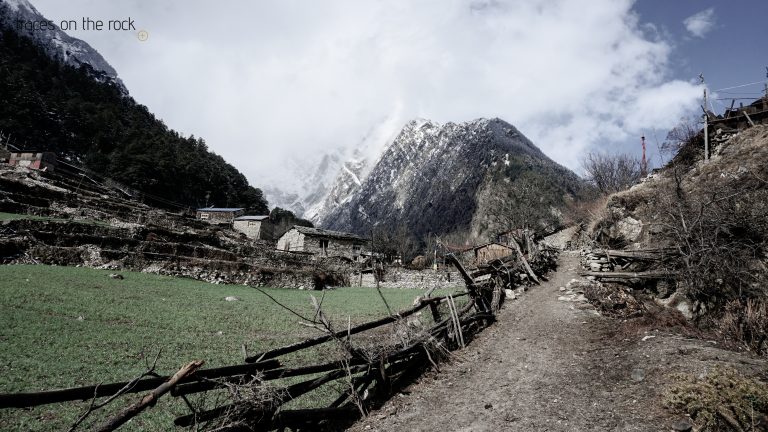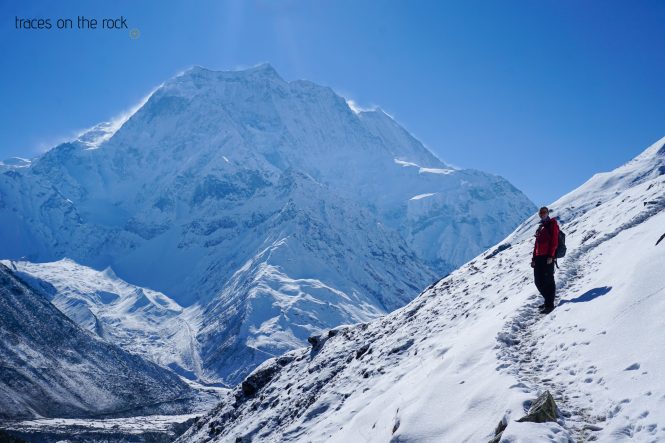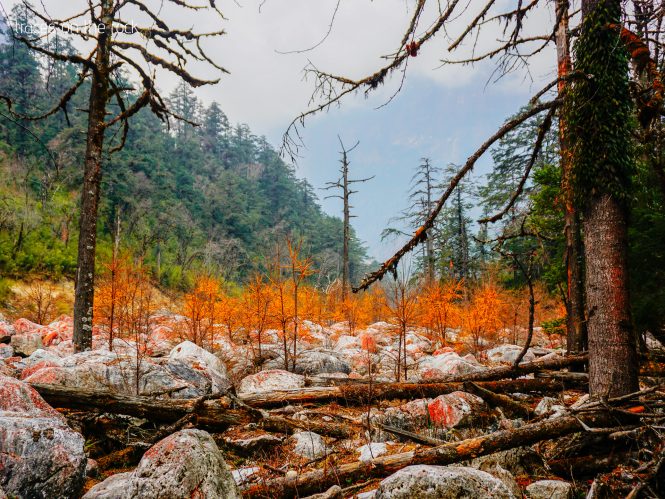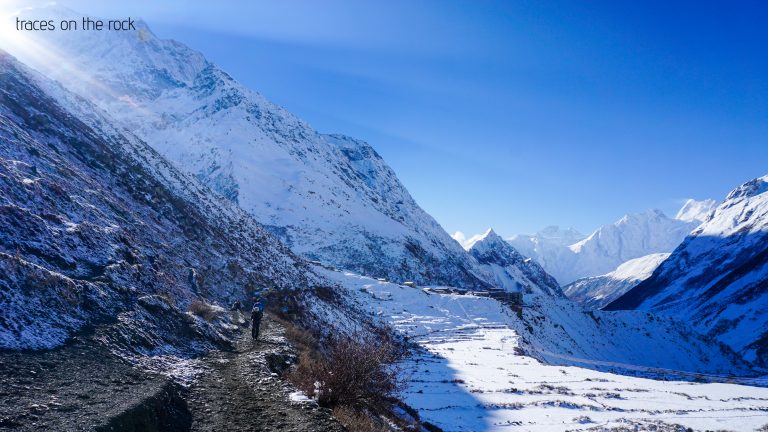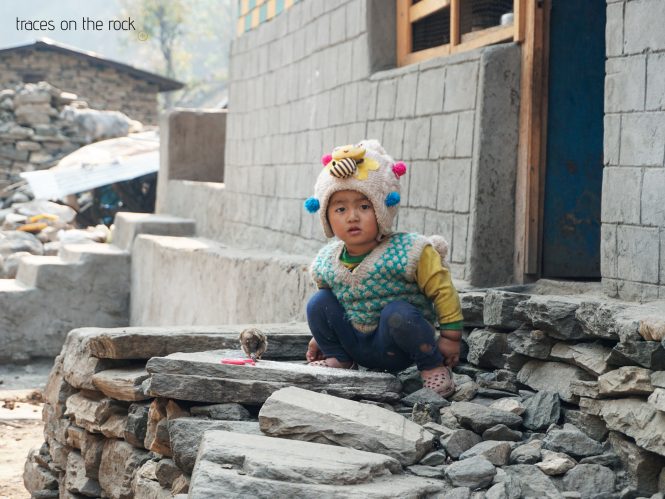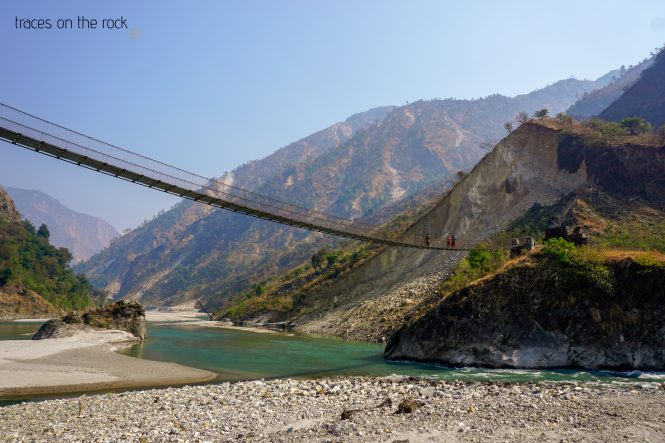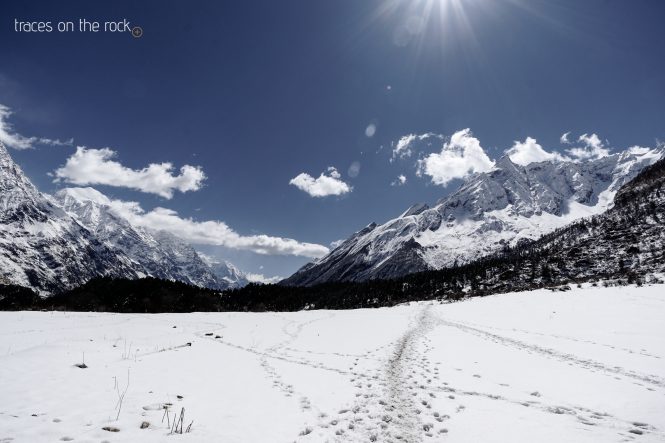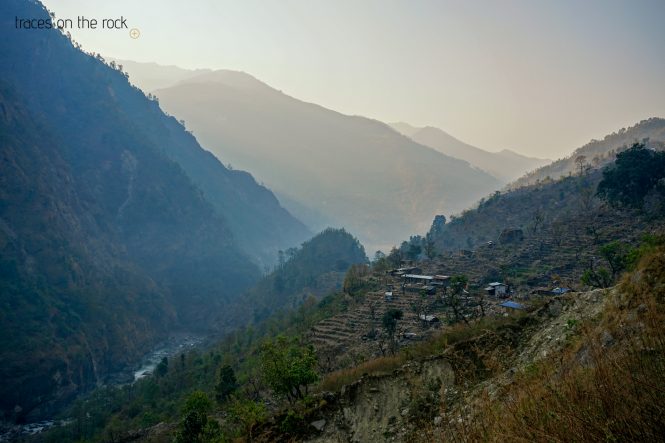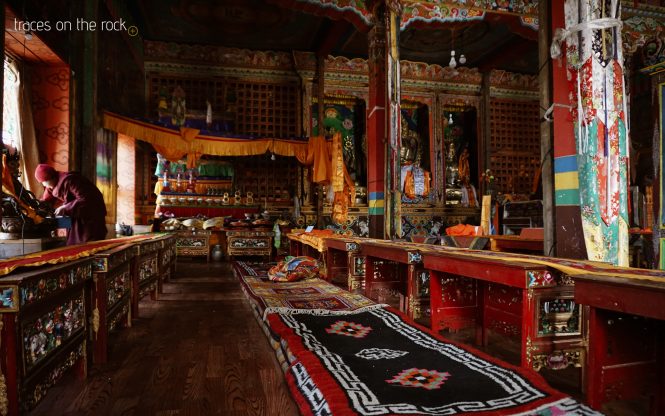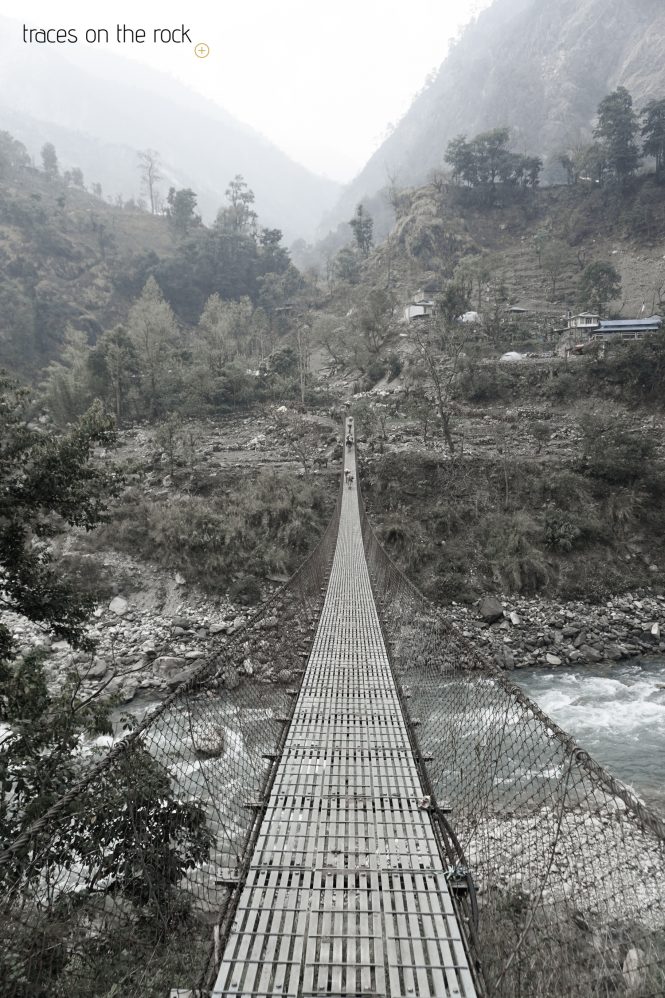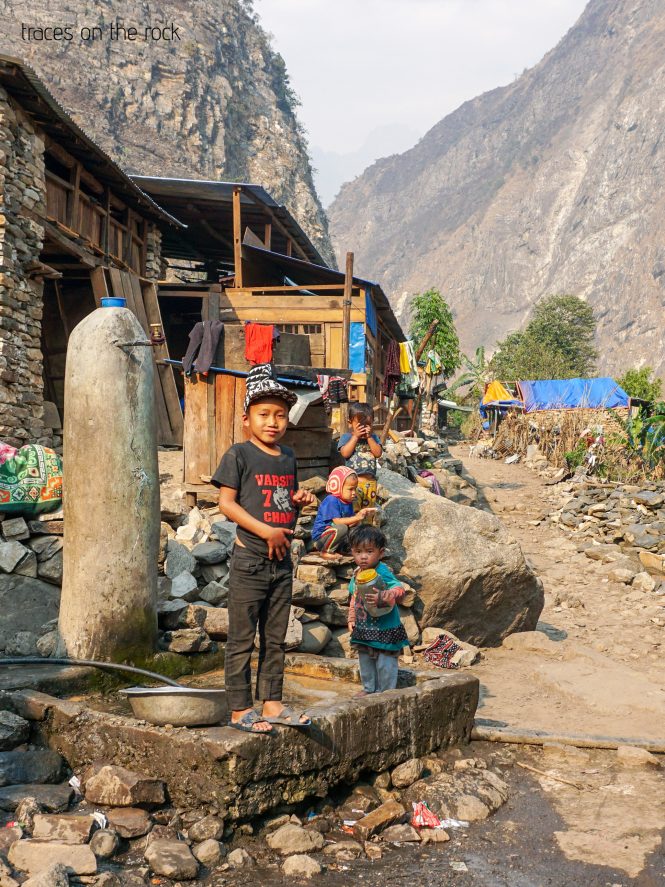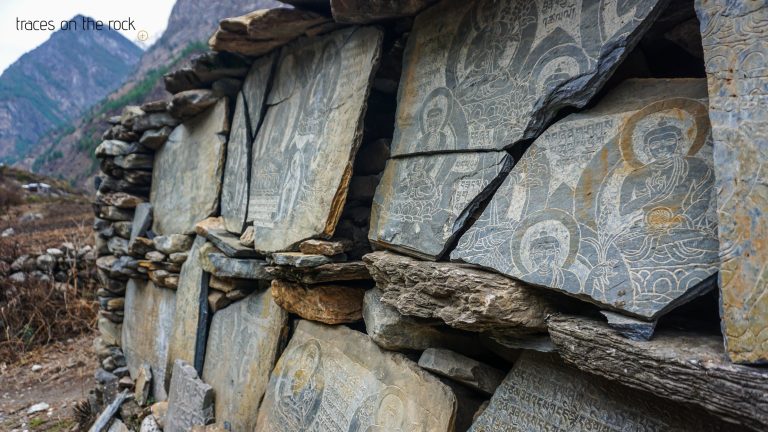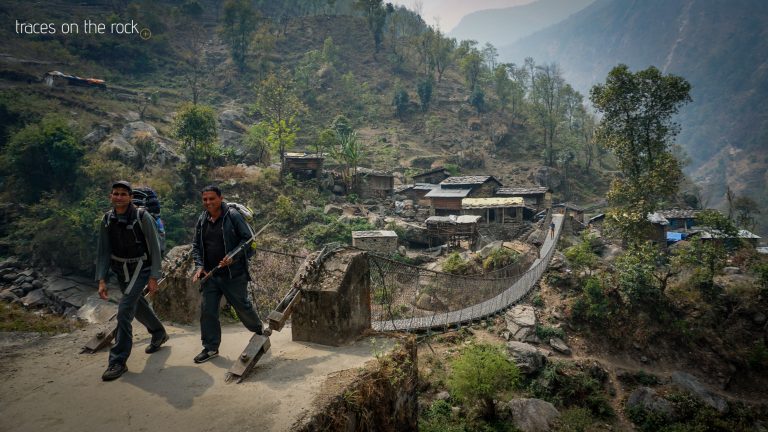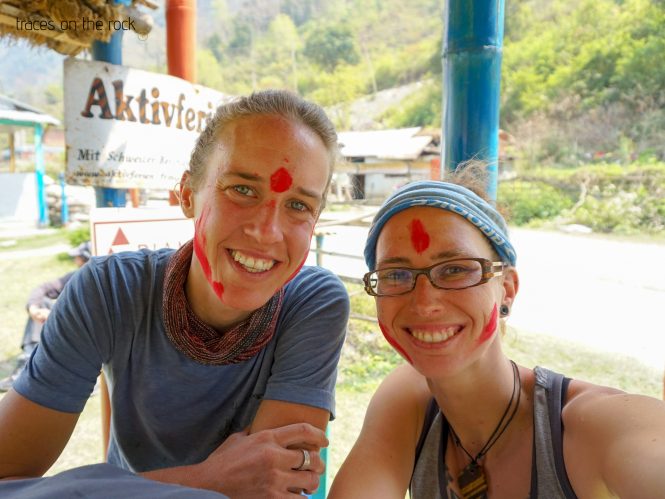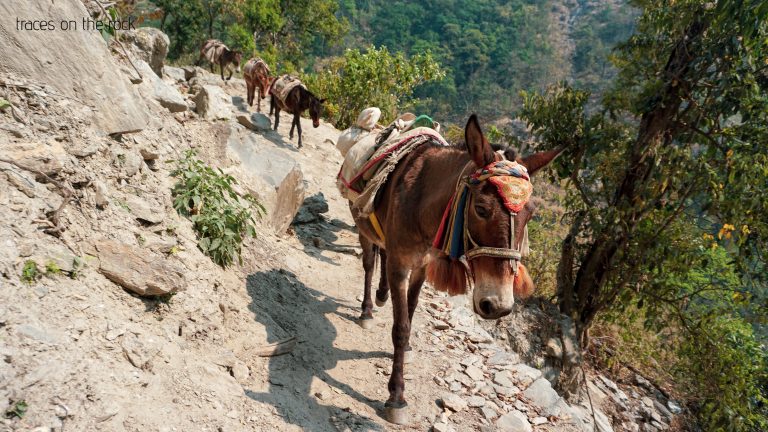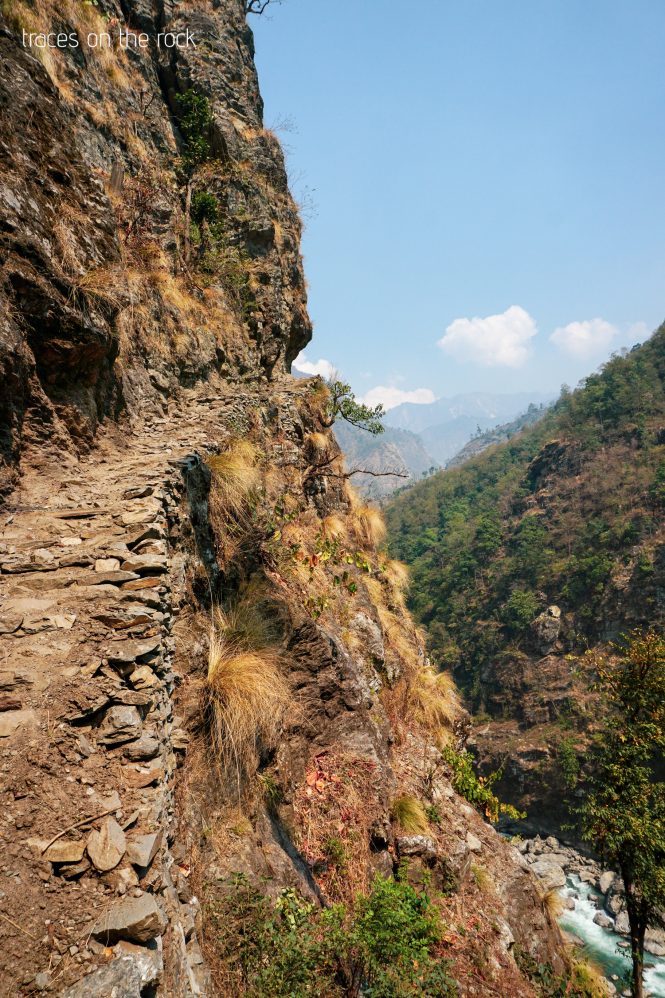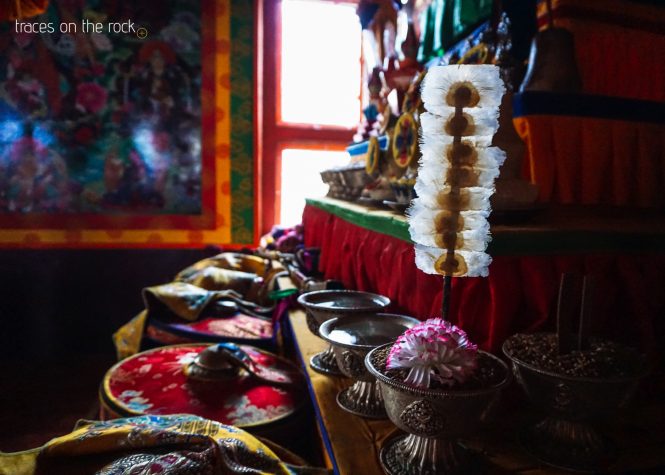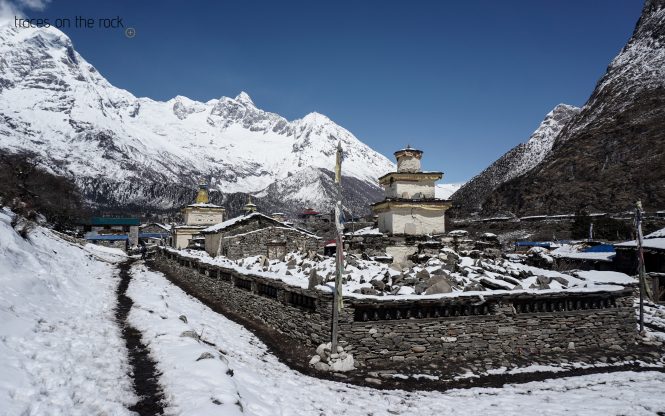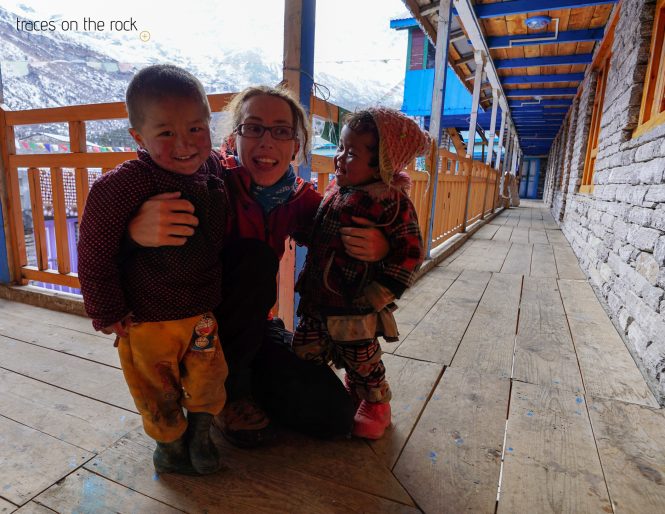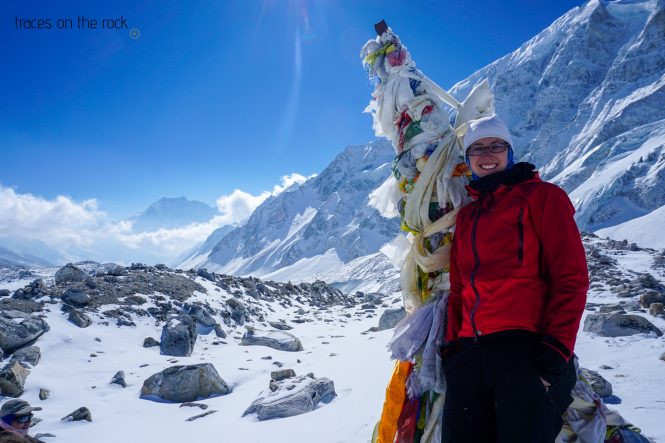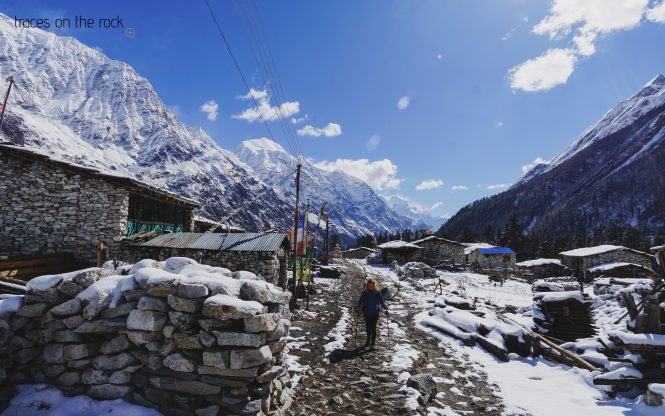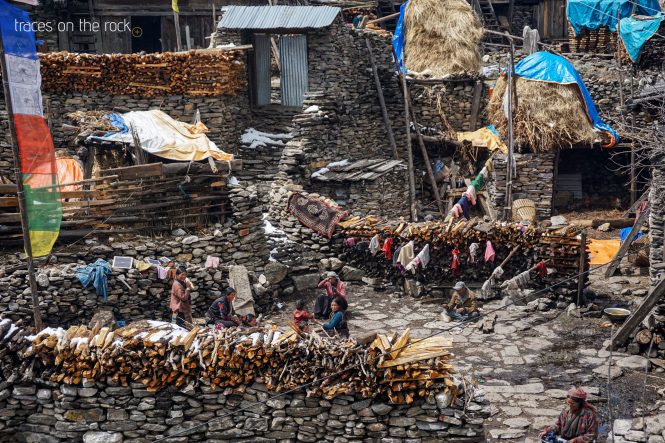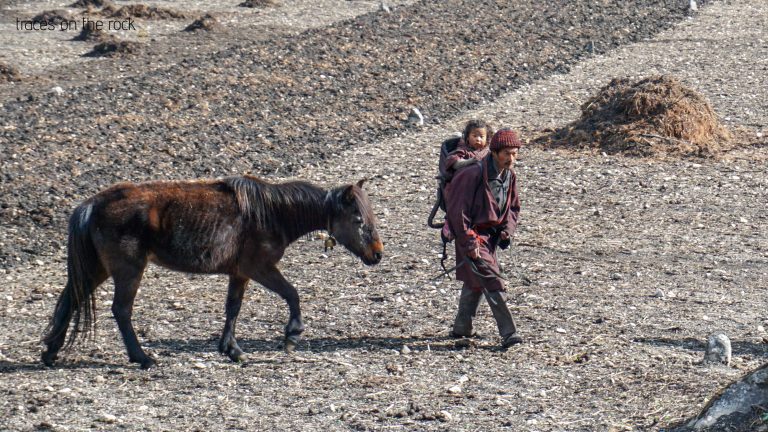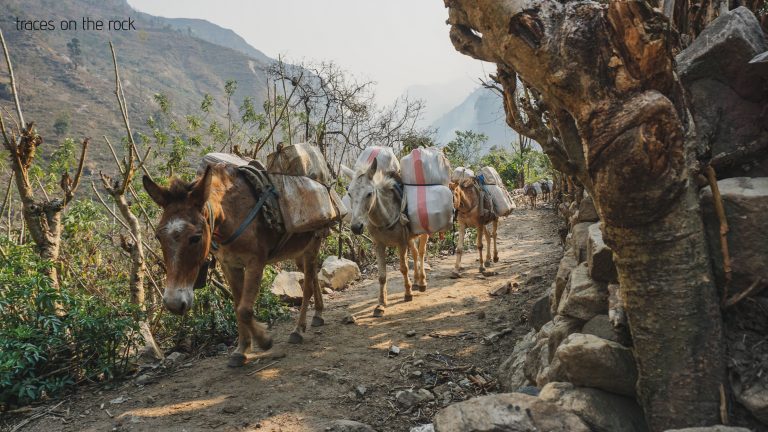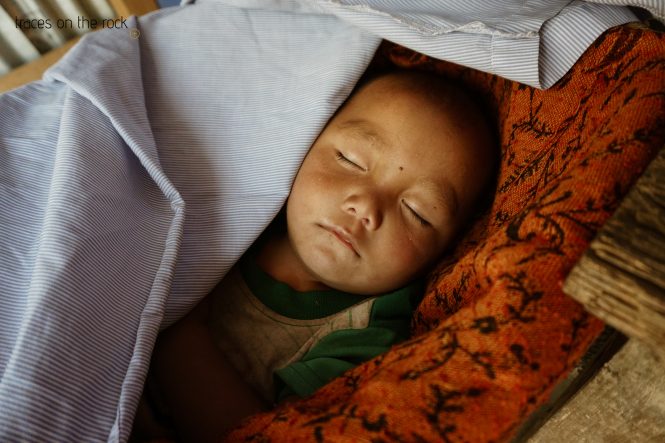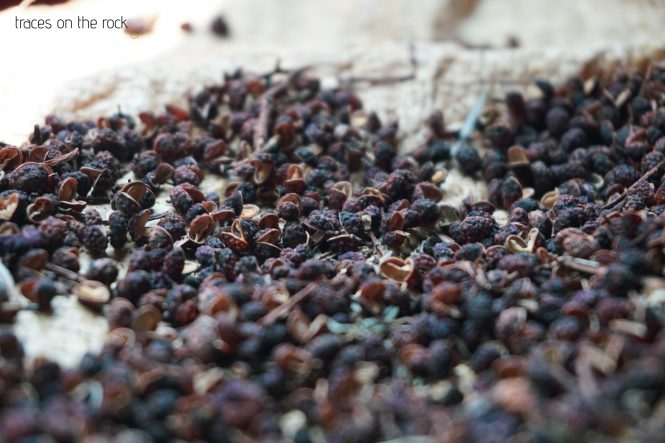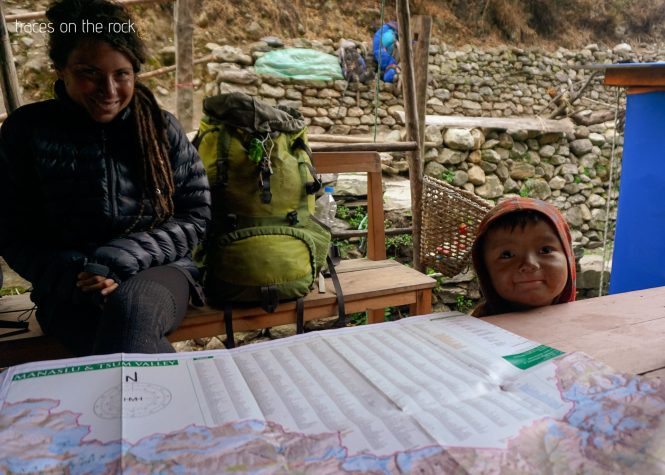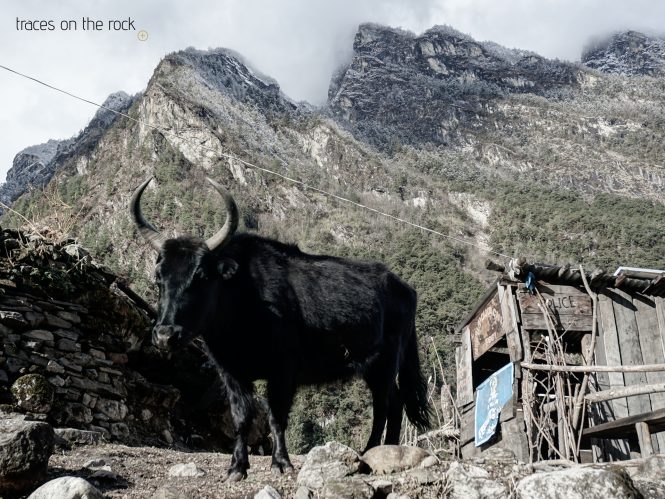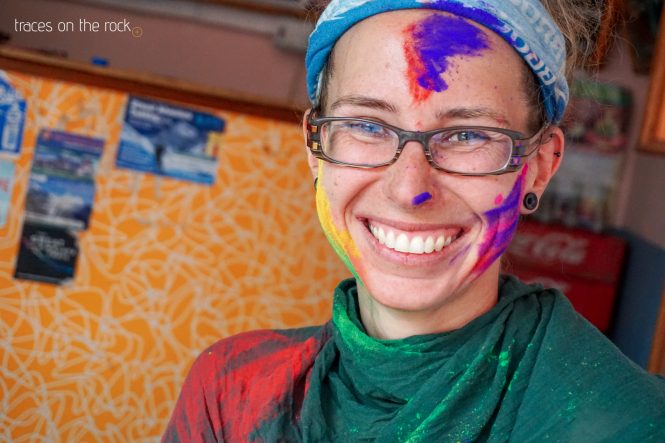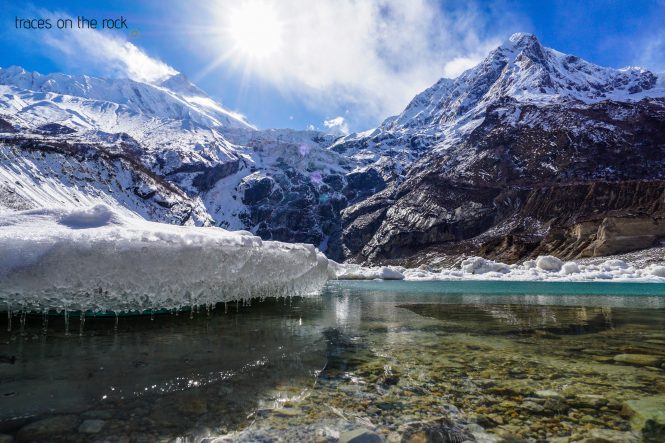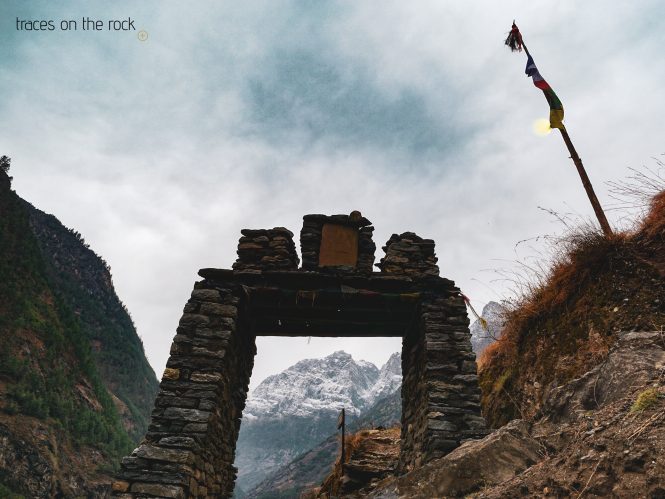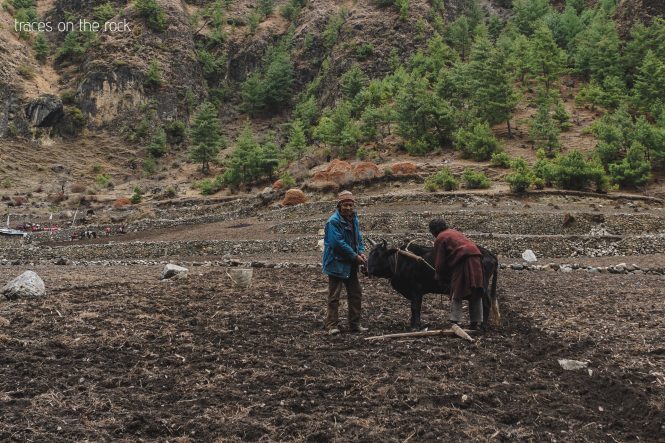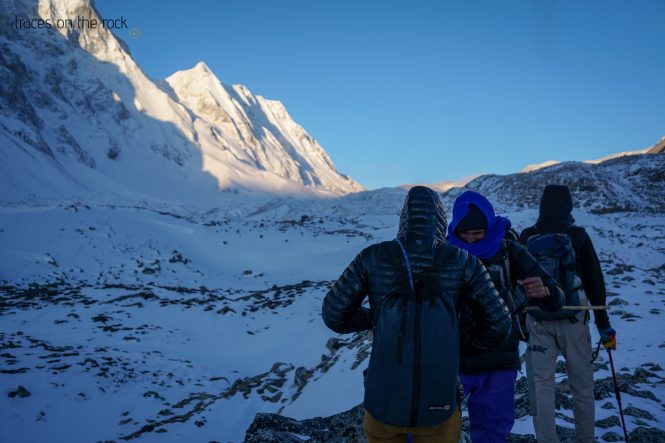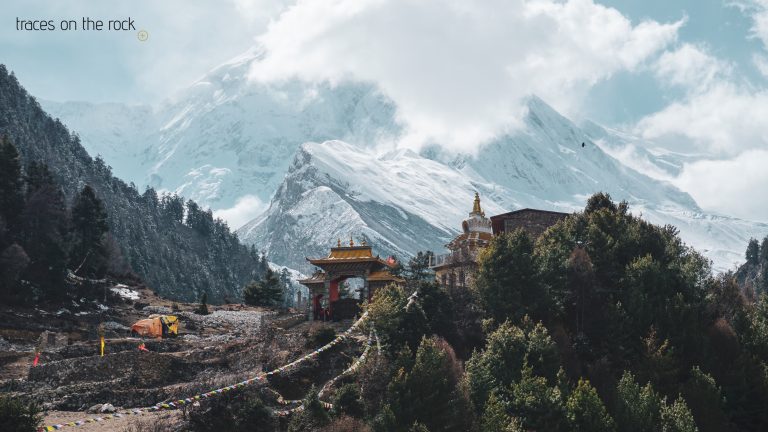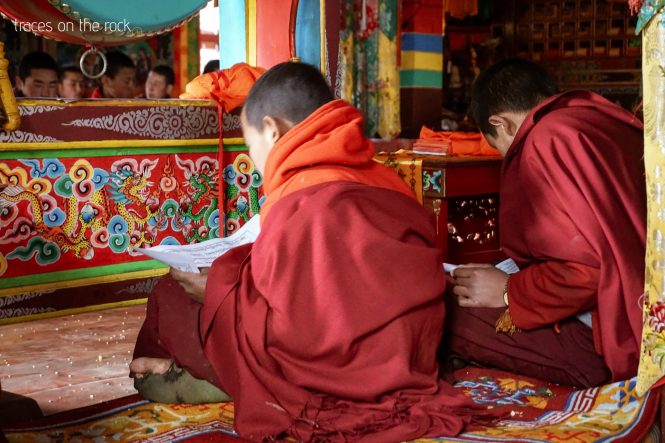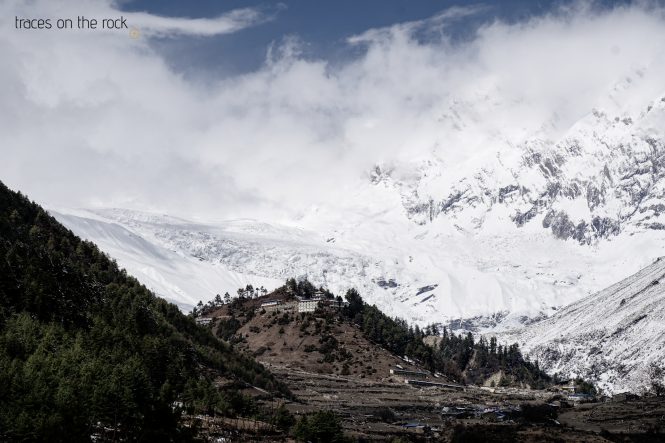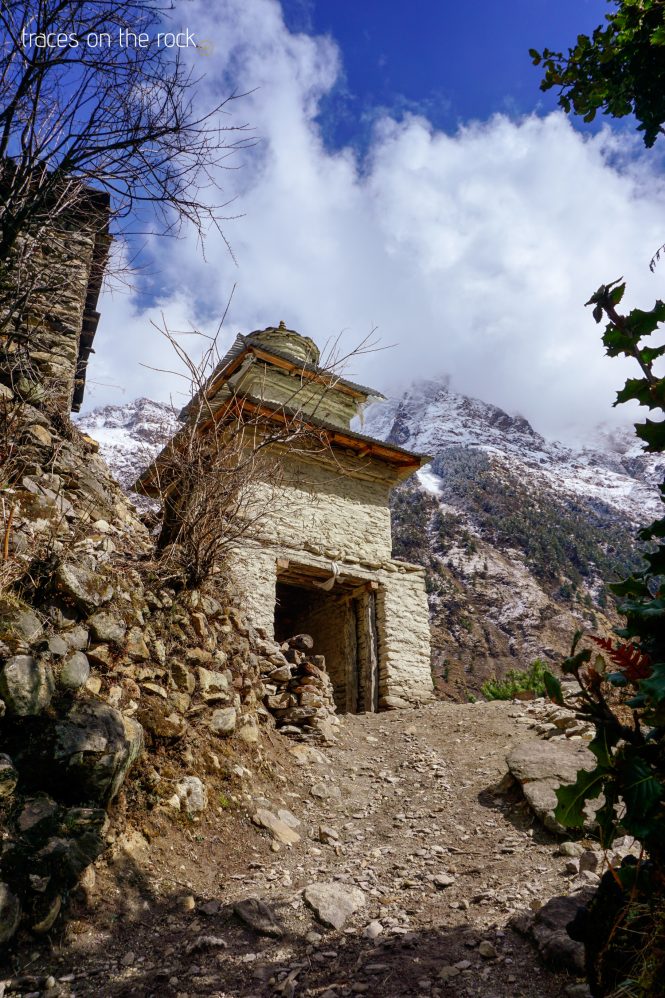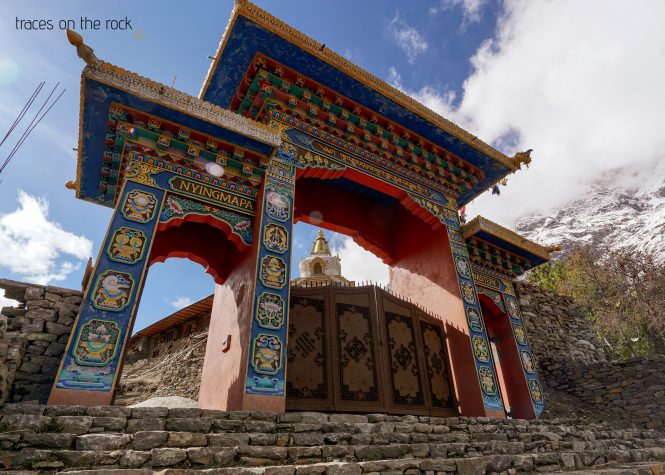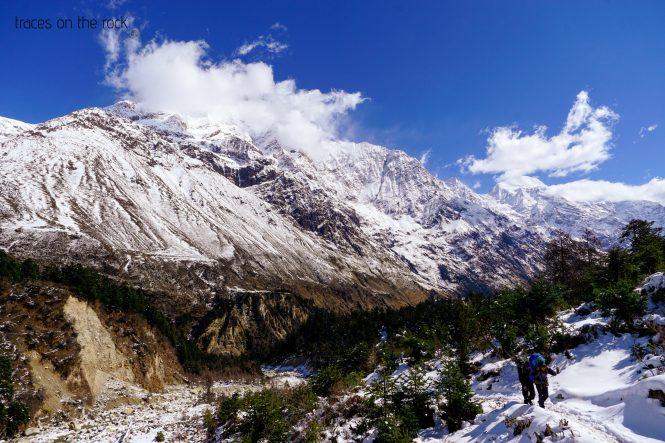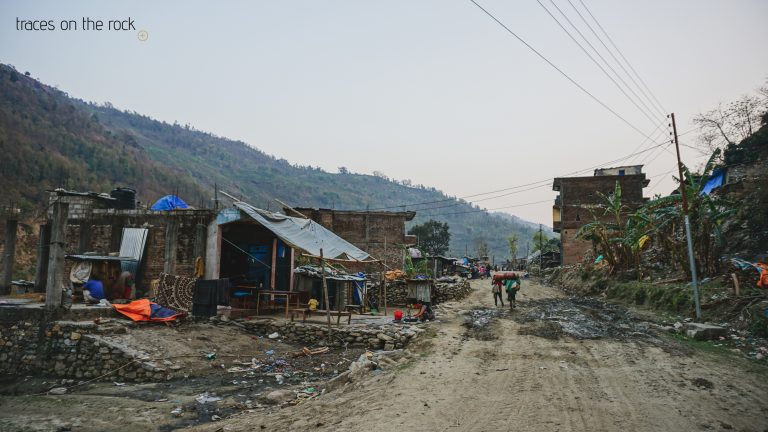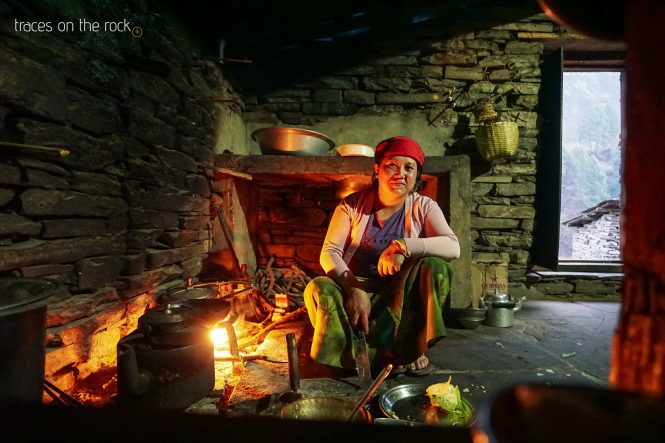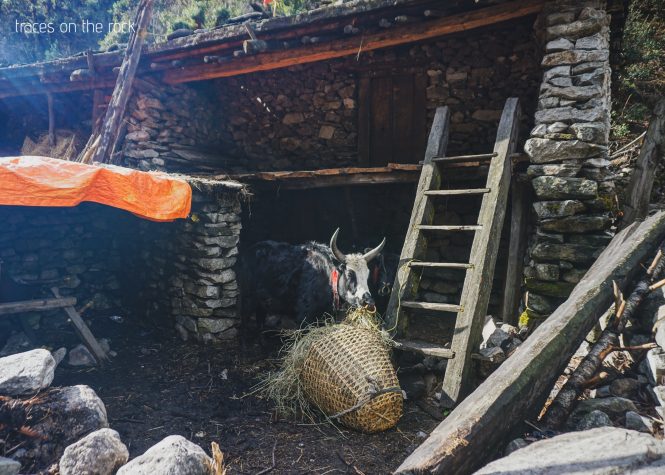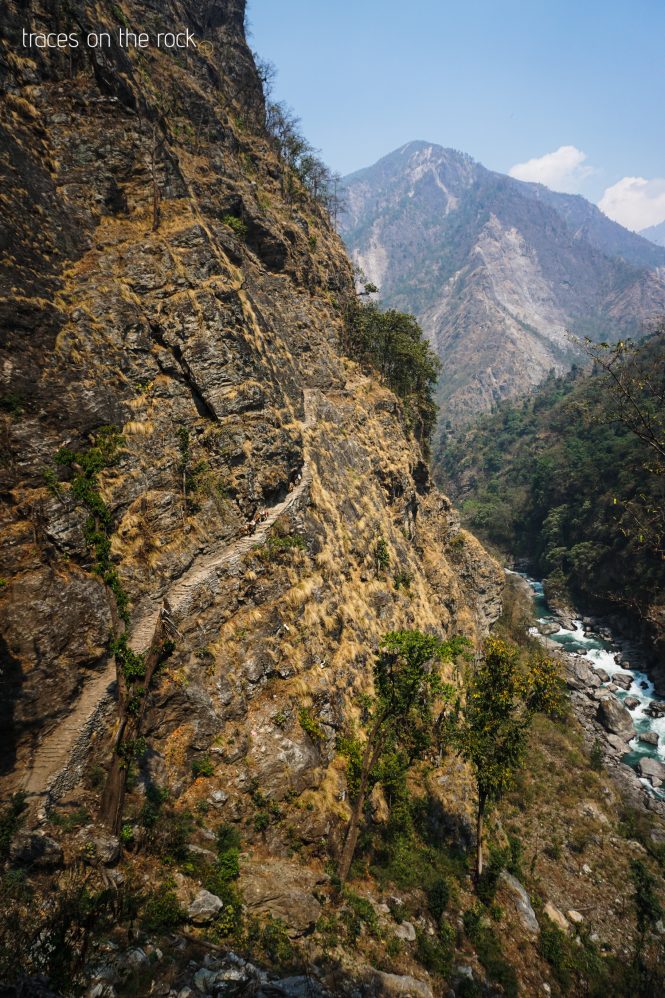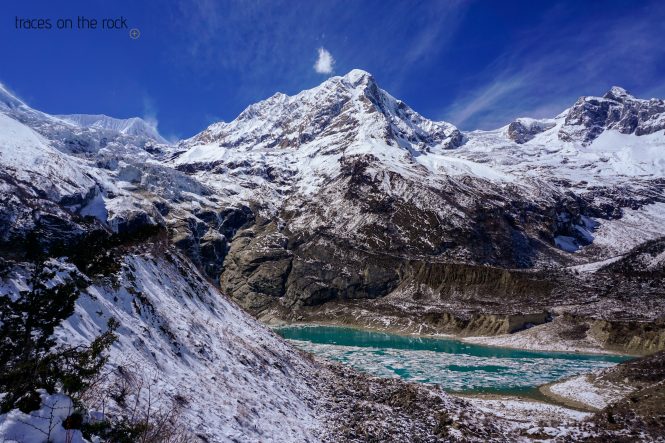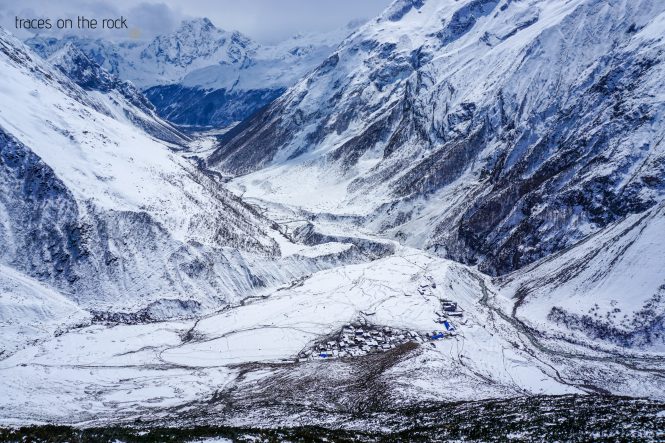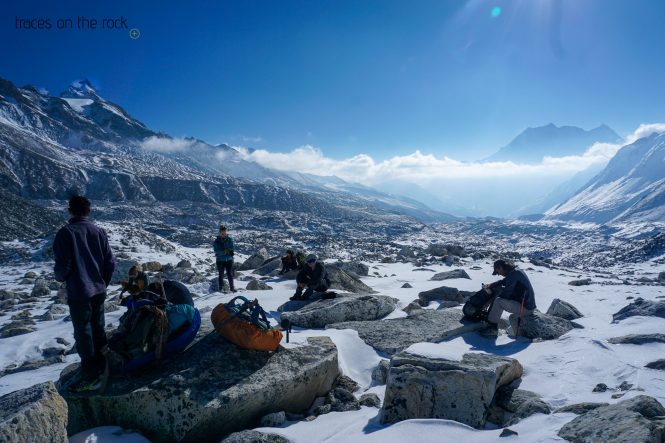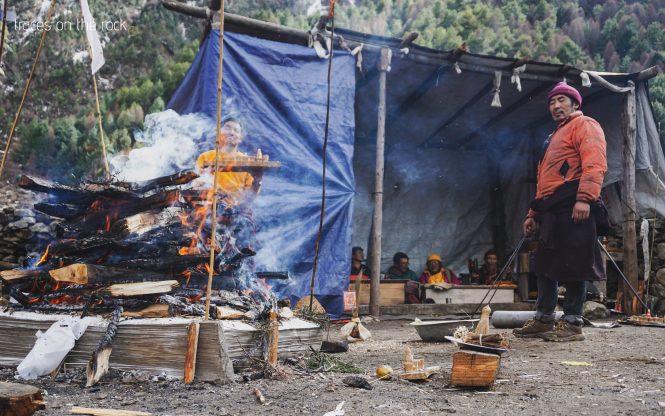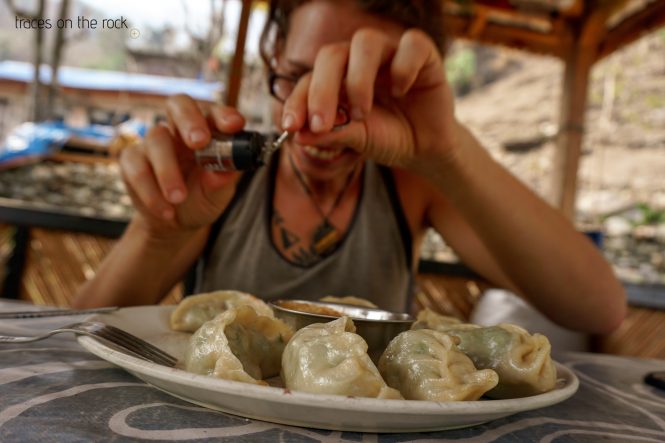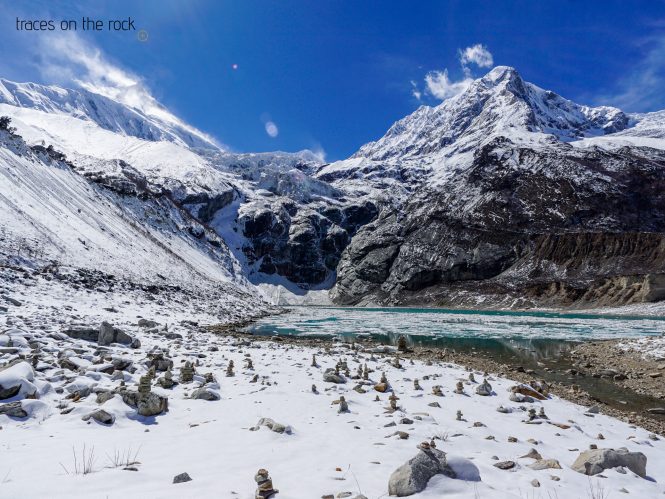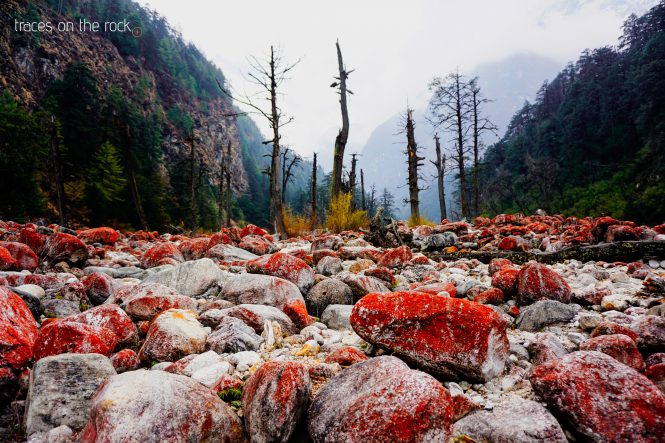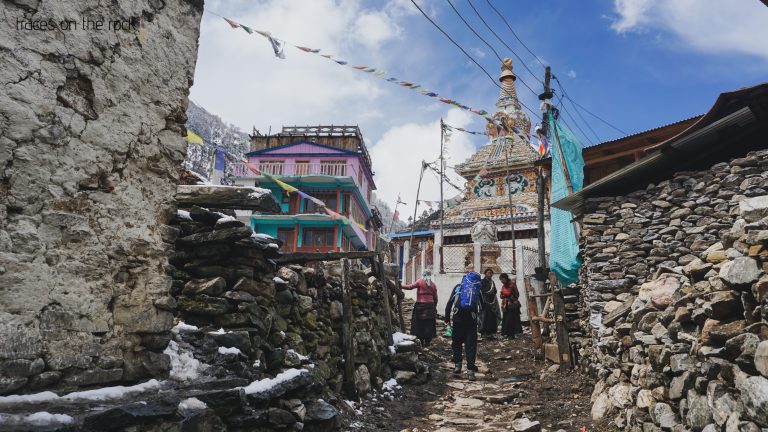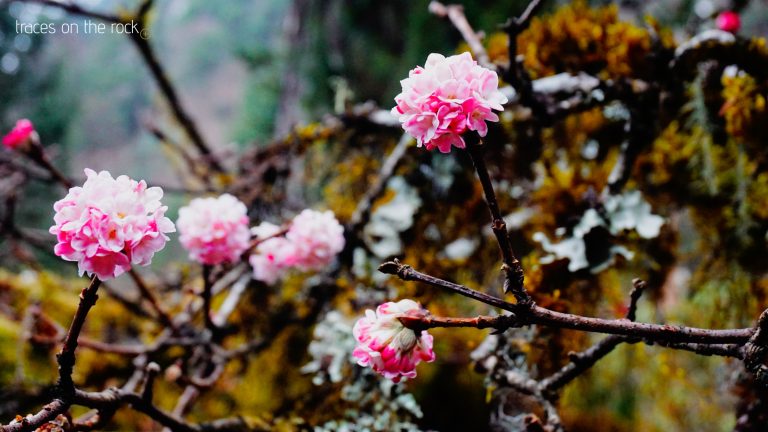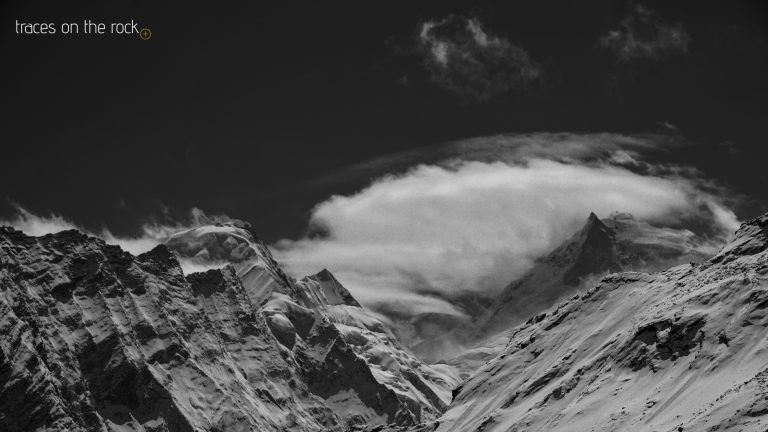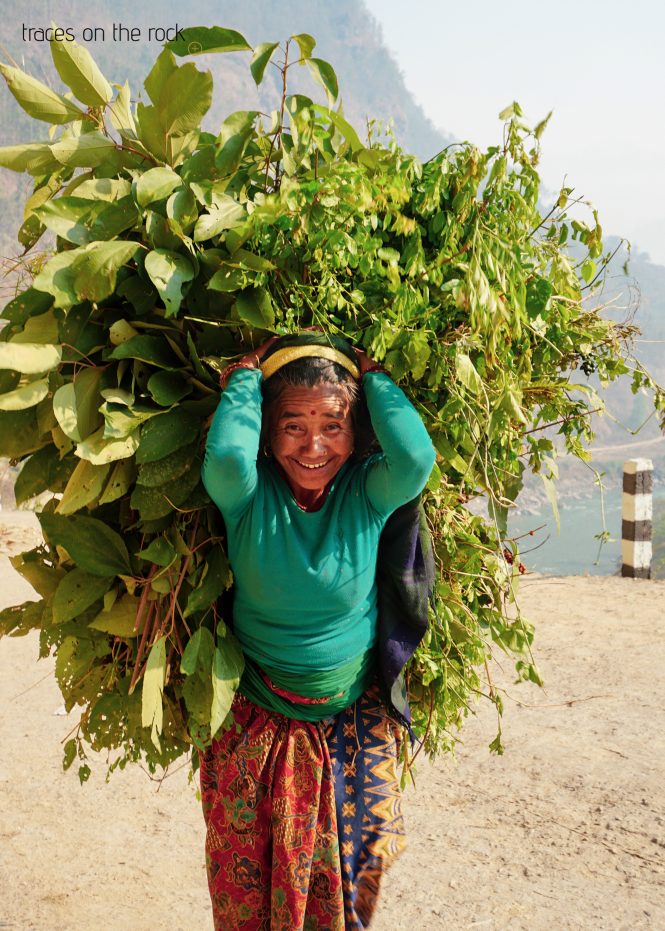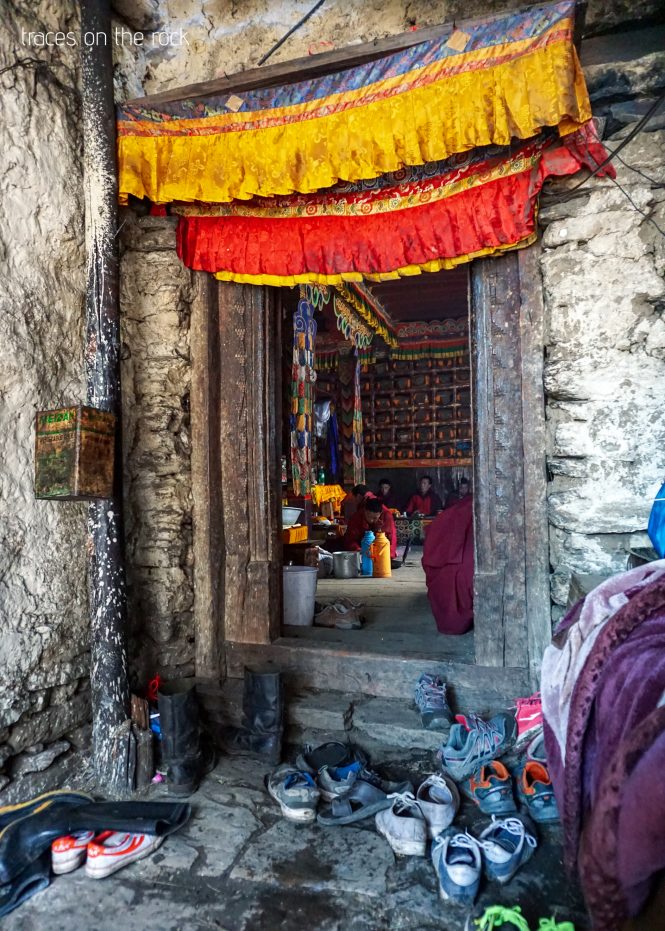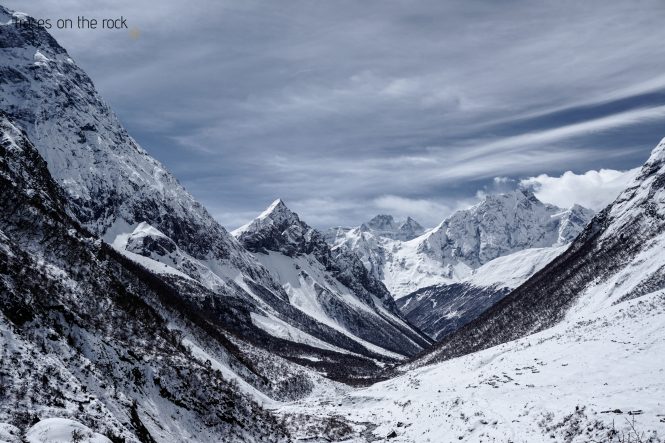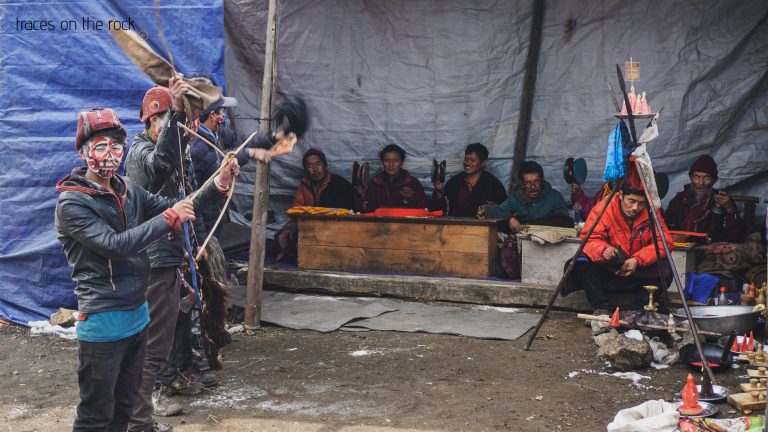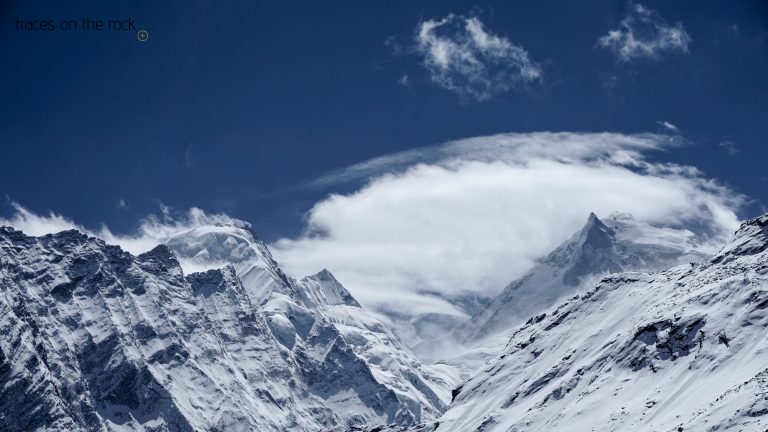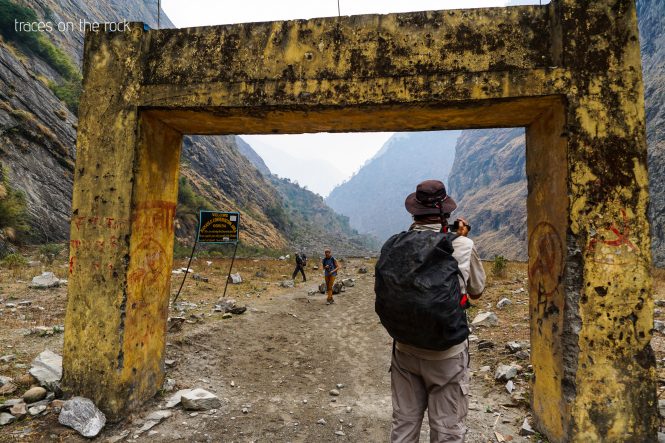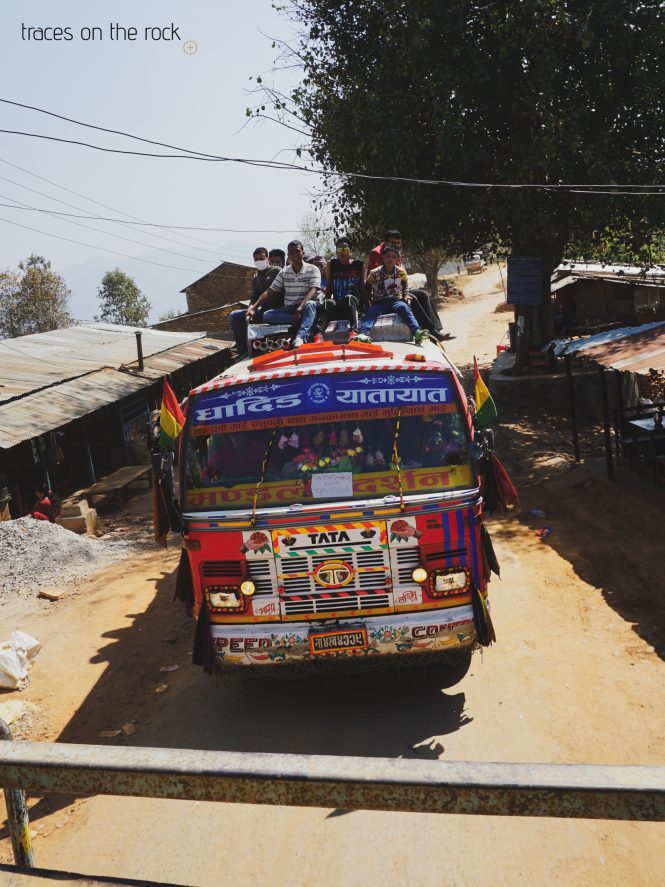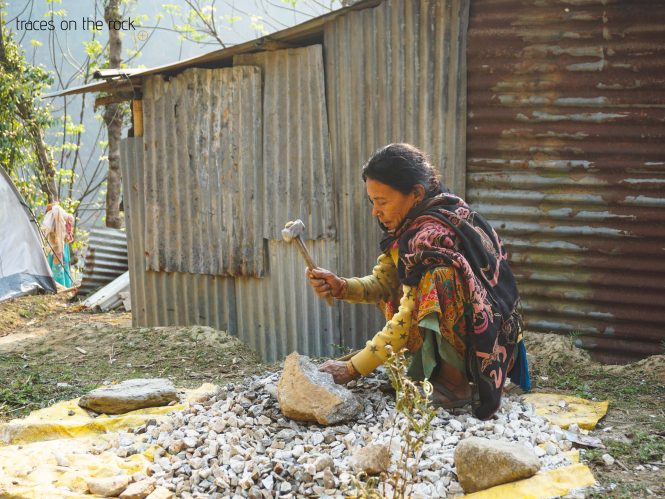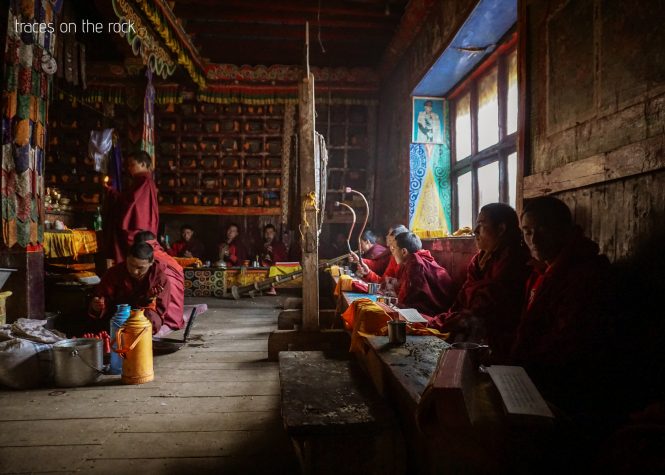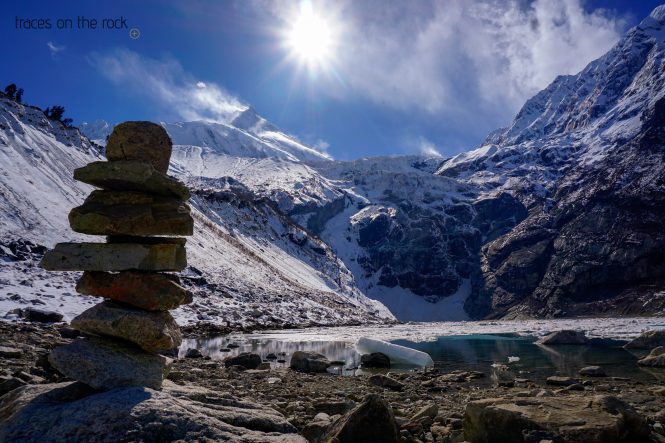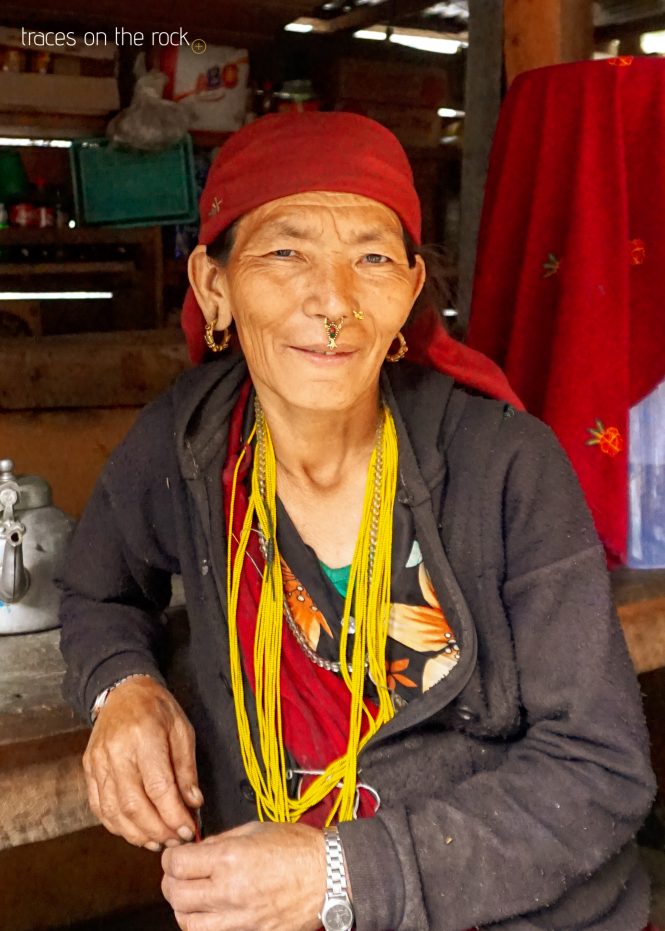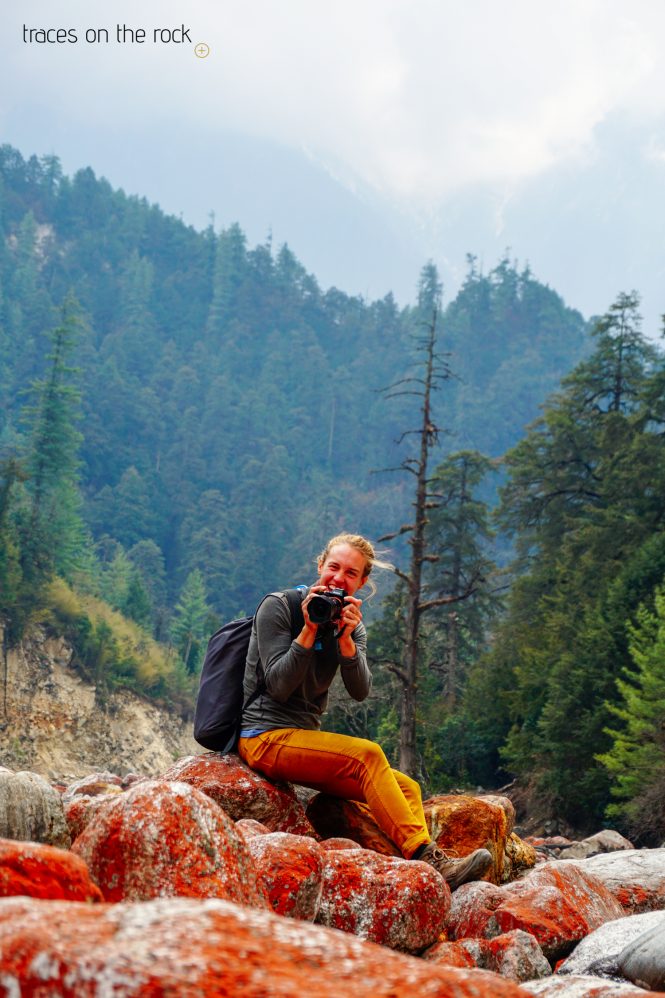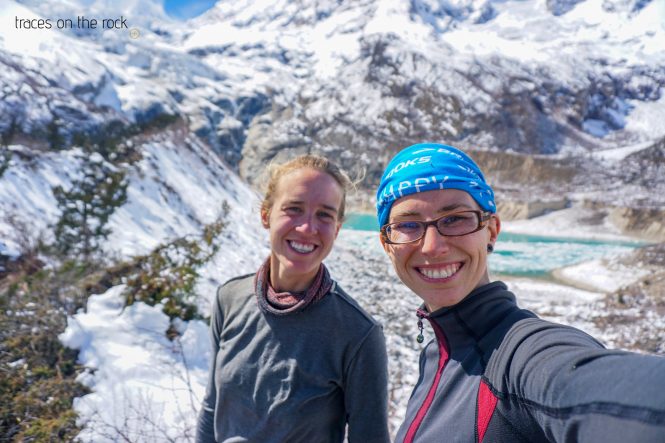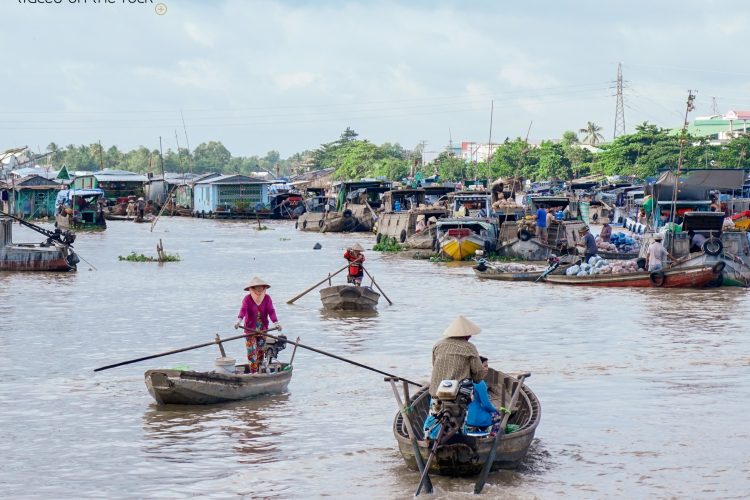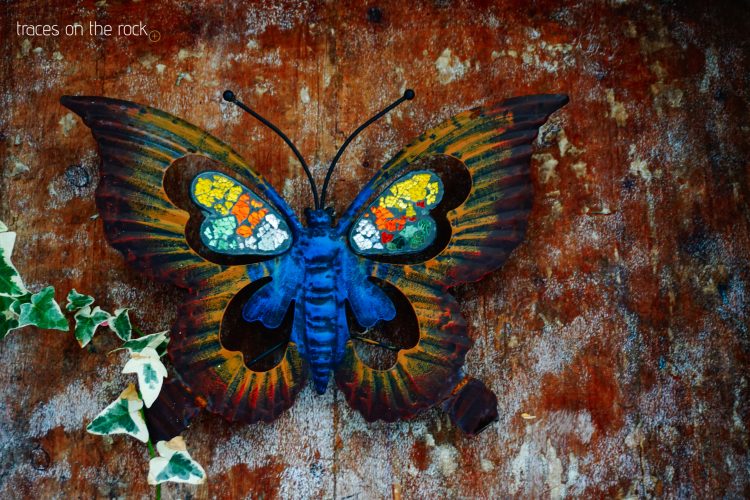They begin to think about God and the world, but above all, they deal with themselves. And this happens even if you go hiking in a group, as there are always passages in which one will walk alone and only accompanied by the sound of ones own breath. Endless valleys, countless stone steps, mighty mountains, meandering paths and the rushing river in a gorge are – in my view – the most intoxicating sceneries to go out, reflect and meditate , let go and to come home. In any case, one is stronger and full of energy – even if the body hurts.
A few days ago, I finished my longest round trip of my life and set a new record for altitude hikes: 5170m. For more than 15 days I was on the less touristy Manaslu trek (including guide and porters), which leads around the Mount Manaslu (Mountain of the Soul: in Sanskrit means “manasu” soul), which is over 8156m high. The trek merges with the familiar Annapurna trek on the last two days. Our hike starts at about 600 meters altitude in Arketh Bazar after spending half of the multi-hour drive from Kathmandu on the roof of a local bus. It was not comfortable on the roof and I almost fell off, but up here it was more comfortable than in the stuffy bus in which a woman had vomited because of countless potholes and bends.
The first aid kit of the bus consists of spit bags!
On the Manaslu Circuit, no day is like the other. The landscape and scenery changes every day. From the second day of hiking, the inhabitants depend on porters and mules, who carry food and essentials to the villages, which takes them up to 6 days to reach the far end of the valley. Therefor, these people are called Foothill Tribes. The closer we get to the Tibetan border, the more we see the influence of Tibetan Buddhism. The image of the residents changes as well the further we go – not only in terms of their cultural affiliation. The clothes are dirtier and more pitted. The cute faces of the children hide behind a crust of dirt and snot. Water is a valued resource and even drying clothes after a washing has to be well timed.
The trek leads along the raging Buri Gandaki River, fed by countless waterfalls and glacial lakes. We walk through humid, mossy forests – which could be either a scenery for fairy tales or for horror movies – through landscapes of bamboo and grass, through wide valleys, along wheat and millet terraces, past natural marijuana fields and through narrow ravines and on small stone-made paths leading along huge cliffs. The effects of last year’s earthquake can be seen everywhere. Now and then we have to detour because stone avalanches have destroyed the way or suspension bridges. Tourists are seldom seen on this trek, as access permissions are limited. Mules are in the majority. Together with the stoic-looking yaks they besiege the narrow trails. I wonder if they just passed on of the hemp plants?
Higher up felt new snow and our guide was worried about whether we could cross the Larkya Pass. We have already met a group of hikers who had to turn around. We continued. In Namrung we saw the first snow-capped mountains. In the past, the trek was tent-based, but now there are several simple guesthouses along the route, so one can sleep relatively luxuriously in more or less comfortable beds. But the nights can get could as there is no heating system. The power supply is sometimes interrupted or not available at all. Some places have solar planels though. But this also means that the kitchen is the center of the house, because it is the only place with a stove in the house. This si the place where the residents eat and drink. But one is just allowed to sit here until the residents say: “Nepali Time”. Not just once we have been asked to leave the kitchen so that the landlord can have a drink with the guide undisturbed by foreigners. Once we had a cup of a warm Raksi. This is a high-proof, clear liquer made from millet or rice. The liquer reminds me of Japanese sake.
Lho is a gem on the trek. It houses a Buddhist monastery (Ribum Gompa) on a nearby hill. Upon arrival, the village was filled with the songs of a nearby prayer house. Inside the building young and old monks sat wrapped in blankets and sang mantras or played the Tibetan gong. Thermos flasks stayed everywhere in the room and I could see the breath of the monks because of the cold air. A few meters away, other monks sat on the stone steps and ate rice. The young men watched a nearby event. Four men with painted faces in red and white danced to the songs and music of older men. They were not monks. Each adolescents held either a bow and arrow, a hatchet, a sickle or animal carcasses in their hands. Another man burned a nearby pile of wood with various gifts and donations. We reached Lho relatively early in the day, so we had time to explore the nearby monastery on the mountain as well, to enjoy the view of Mount Manaslu and to acclimate.
Our way to Samagaun took us through snow-covered landscapes. The trails were sometimes difficult to find. I followed the donkey dung. This is basically a good guide, if you are off the trek. Likewise, I learned that the tube of the hydration bladder should not be full of water when it is cold and icy. Unfortunately I made the experience that my hose was frozen one morning.
What a rookie mistake! That will never happen to me again!
Unfortunately, it happened on the day we wanted to cross the Larkya Pass. I had no drinking water until the first rays of sunshine. A real pain and dangerous at this altitude. I occasionally ate snow, sucked sweets and fought in addition with the icy cold, lack of oxygen and lack of sleep. The night was short. We started at 4:30am in the morning to be on the pass before noon, otherwise the winds would be too strong. Our steps were slow.
Why am I here again? Why am I doing this? When will the sun finally hit me?
Feeling the first rays of sunshine on my face was like freeing myself from the thoughts that circled around the lack of drinking water, low blood sugar, the cold and the next step forward. The sun had such a warming power that everything became so much easier and when I finally arrived at the highest point of the pass, all the thoughts about the torment of the nocturnal ascent disappeared. A lightness filled me and my thoughts circled around upcoming potential challenges. The descent was like a walk in the park.
If you have more questions regarding the trek – feel free to contact me.

